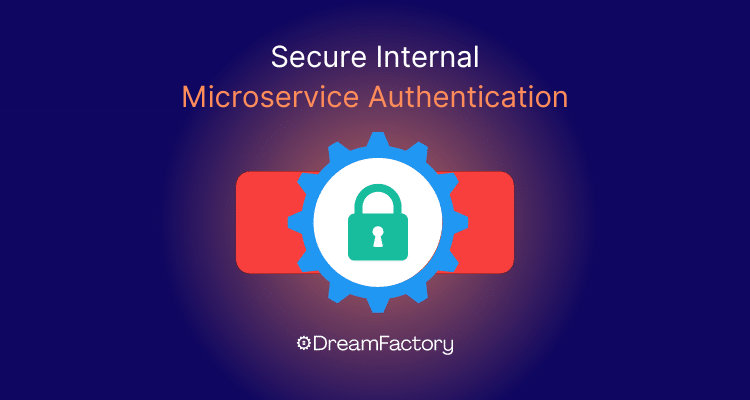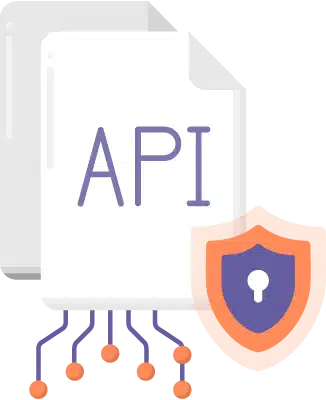Secure Internal Microservice Authentication: A Comprehensive Guide
by Spencer Nguyen • March 22, 2024

Internal microservice authentication is a critical component of software development. It ensures that only authorized users and services can access sensitive information and perform actions within a system. With the rise of microservices architecture and the increasing complexity of modern software ecosystems, implementing effective authentication mechanisms for internal microservices has become more important than ever.
In this comprehensive guide, we will explore the key principles, strategies, and best practices for securing internal microservice authentication, enabling you to protect your systems from unauthorized access and potential security breaches.
Here’s the key things to know about secure internal microservice authentication:
- Robust authentication mechanisms ensure only authorized users and services can access microservices, protecting sensitive data.
- Popular authentication methods include centralized systems, token-based approaches like JWT, and certificate-based mutual TLS.
- Implementing role-based access control (RBAC) enables fine-grained authorization and access control across microservices.
- Comprehensive logging, real-time alerts, and regular audits are crucial for monitoring and mitigating potential vulnerabilities.
- Carefully selecting and implementing authentication methods tailored to system requirements, combined with robust monitoring and access controls, is essential for securing internal microservice communications.
Table of Contents
- Understanding the Importance of Secure Internal Microservice Authentication
- Choosing the Right Authentication Method for Your Microservices
- Monitoring and Auditing Your Internal Microservice Authentication
- Internal Microservice Authentication with DreamFactory

Generate a full-featured, documented, and secure REST API in minutes.
Generate a full-featured, documented, and secure REST API in minutes.
Understanding the Importance of Secure Internal Microservice Authentication
Let's dive deeper into why understanding the importance of secure internal microservice authentication is crucial for your software development project.
First and foremost, a robust authentication system ensures that only authenticated and authorized users or services can access the microservices. By implementing strong authentication mechanisms, you eliminate the risks associated with unauthorized access, protecting valuable data from potential security breaches.
Now, here's where it gets really exciting (for us techies, at least). Monitoring and auditing! We're talking comprehensive logging, real-time alerts for any suspicious activity, and regular check-ups on our roles and permissions. It's like having a security detail watching your back 24/7.
Look, I get it. Secure authentication might not be the most glamorous part of software development. But trust me, it's the hero that keeps your project safe and sound. So let's roll up our sleeves, dive into the nitty-gritty details, and make sure your microservices are locked down tighter than Fort Knox. Your future self will thank you!
Choosing the Right Authentication Method for Your Microservices
It is crucial to select an authentication method that aligns with your system requirements, scalability, and security needs. We’ll cover some of the most popular methods for internal microservice authentication.
Implementing bearer token authentication
To implement this authentication method, you first need to generate a token upon successful user authentication. This token acts as a credential that the user can use to access different parts of your microservices architecture. It contains information about the user's identity and permissions, and it should be securely stored and transmitted.
To ensure the security of the bearer tokens, it is crucial to follow best practices such as using strong encryption algorithms and secure token storage mechanisms. Additionally, you should implement measures to prevent token tampering, such as adding expiration dates and using signature verification.
When designing your microservices architecture, consider using a centralized token issuer service that can handle token generation, validation, and revocation. This allows for better scalability, as well as centralized control and management of user acceblss.
Utilizing JWT (JSON Web Tokens) for secure authentication
A JWT consists of three parts: a header, a payload, and a signature. The header specifies the algorithm used for signing the token, the payload contains the relevant information about the user, and the signature ensures the integrity and authenticity of the token.
To implement JWT authentication, you need to configure your microservices to validate the JWT signature and extract the necessary user information from the payload. This can be achieved through the use of JWT libraries or frameworks that provide built-in support for JWT authentication.
By utilizing JWTs, you can achieve stateless authentication, meaning that your microservices do not need to rely on session state or database lookups to authenticate users. This approach enables better scalability and performance for your microservices architecture.
Employing mutual TLS (Transport Layer Security) for enhanced security
In addition to using JSON Web Tokens (JWT), another crucial aspect of secure internal microservice authentication is the implementation of mutual TLS (Transport Layer Security). TLS is a cryptographic protocol that ensures secure communication over computer networks.
By employing mutual TLS, you can establish a secure connection between your microservices, ensuring that only authorized services are able to communicate with each other. This is achieved through the exchange of digital certificates and the use of encryption algorithms.
When implementing mutual TLS, each microservice must be assigned a valid digital certificate, which is issued by a trusted Certificate Authority (CA). These certificates are then used to verify the authenticity and integrity of the communication between microservices.
Mutual TLS provides an additional layer of security by enforcing the use of encryption and authentication for all communication between microservices. This helps protect against eavesdropping, tampering, and other potential security threats.
Implementing role-based access control for fine-grained authorization
Implementing role-based access control (RBAC) is a crucial step in ensuring fine-grained authorization within your secure internal microservices environment. RBAC allows you to define different roles and assign them to users or entities within your system, controlling what actions they can perform and what resources they can access.
By implementing RBAC, you can tightly control access to sensitive data and functionalities within your microservices, reducing the risk of unauthorized access or potential security breaches. It provides a granular level of access control, allowing you to define permissions based on the specific needs of each microservice.
To implement RBAC, you need to identify the roles that exist within your system and define the permissions associated with each role. This can involve determining what actions a user with a particular role can perform, what resources they can access, and any restrictions or limitations that may apply.
Once you have defined the roles and permissions, you can enforce RBAC within your microservices architecture using a variety of methods, such as using middleware or implementing access control checks at various entry points.
Monitoring and Auditing Your Internal Microservice Authentication
Monitoring and auditing your internal microservice authentication is an essential part of maintaining a secure environment. By regularly monitoring and auditing your authentication processes, you can identify any potential vulnerabilities or suspicious activities and take prompt action to mitigate them.
To effectively monitor your internal microservice authentication, consider implementing a comprehensive logging system that captures relevant information such as user activity, authentication events, and access attempts. This will enable you to track and analyze these events for any anomalies or security breaches.
Setting up real-time alerts can help notify you of any unauthorized access attempts or suspicious activities, allowing you to respond proactively and minimize potential damage.
Regular audits of your authentication processes are also crucial to ensuring their effectiveness. Conduct periodic reviews of your RBAC roles, permissions, and access control mechanisms to identify any outdated or unnecessary privileges. This will help you maintain a strong security posture by removing any unnecessary access points.

Generate a full-featured, documented, and secure REST API in minutes.
Generate a full-featured, documented, and secure REST API in minutes.
Internal Microservice Authentication with DreamFactory
DreamFactory's API generation capabilities can greatly simplify the implementation of secure authentication for internal microservices. By automatically generating APIs that adhere to industry standards and best practices, developers can quickly set up authentication mechanisms like OAuth, OpenID Connect, and JWT without having to build them from scratch.
It offers role-based access control for granular permissions management across microservices. DreamFactory also enables secure communication using HTTPS/TLS and provides logging and monitoring capabilities for auditing authentication processes.
Want to give it a shot? Try it free for 14 days in our lab!
TL;DR - GET AN AI SUMMARY
AI SUMMARY
READY TO BUILD YOUR API?
See how DreamFactory can automatically generate REST APIs for your database in minutes.
Try DreamFactory FreeAs a seasoned content moderator with a keen eye for detail and a passion for upholding the highest standards of quality and integrity in all of their work, Spencer Nguyen brings a professional yet empathetic approach to every task.
























